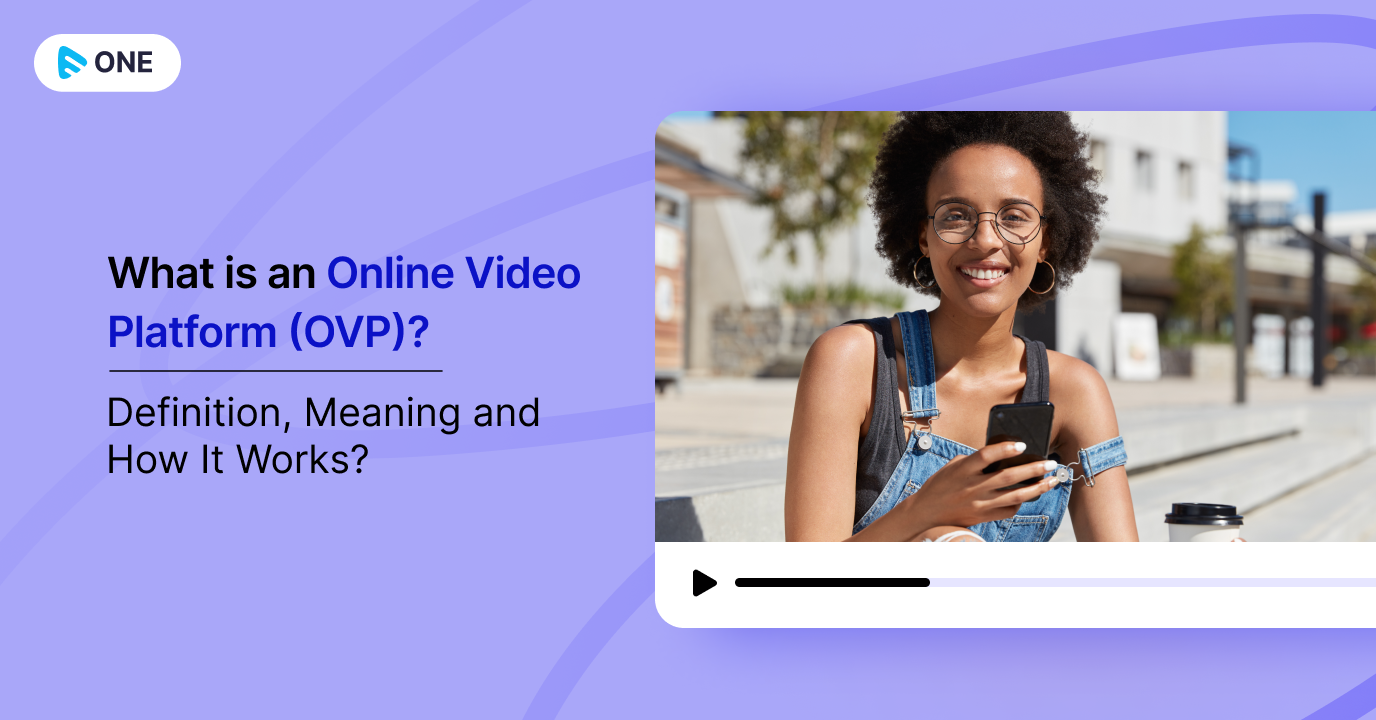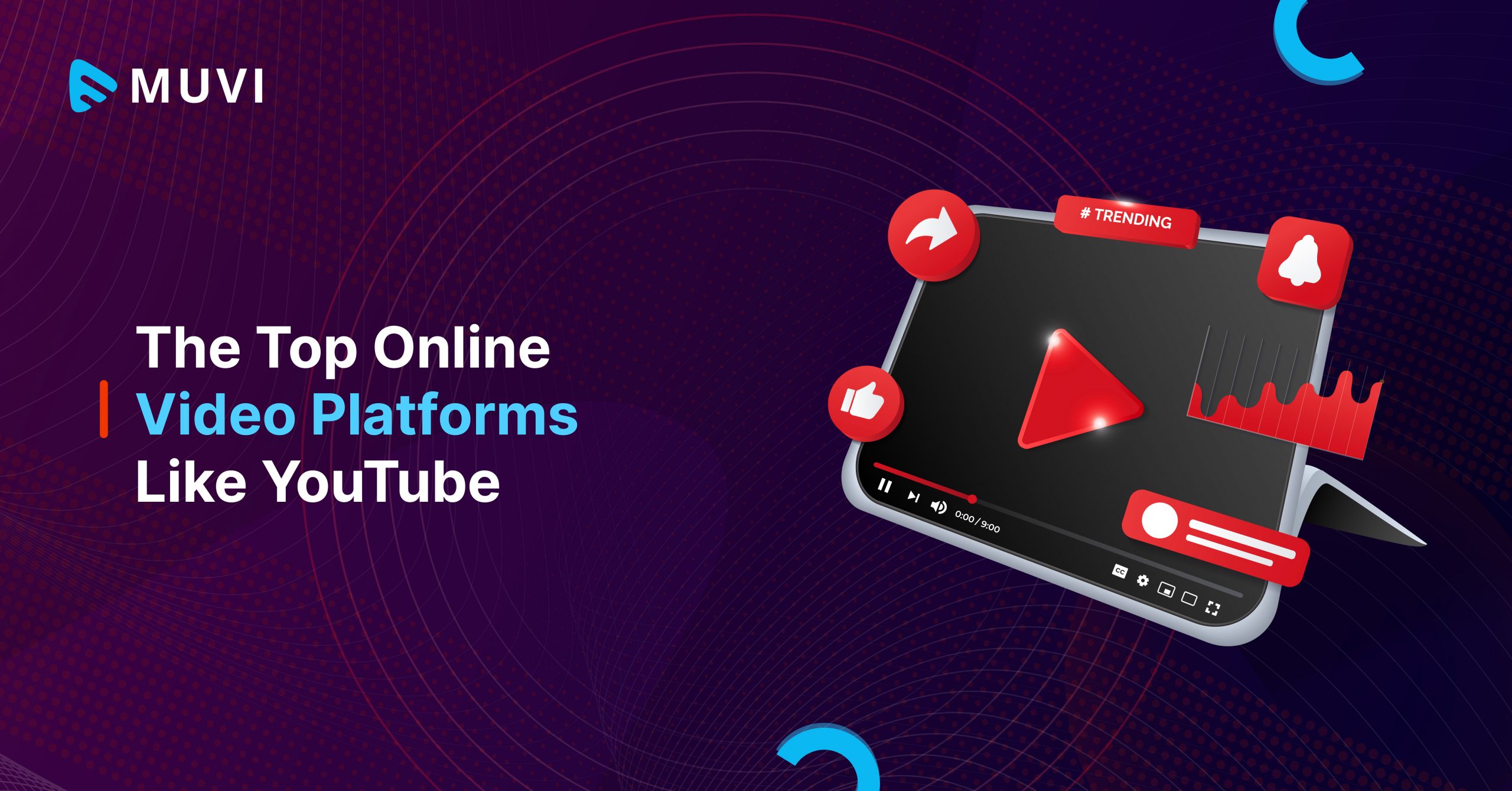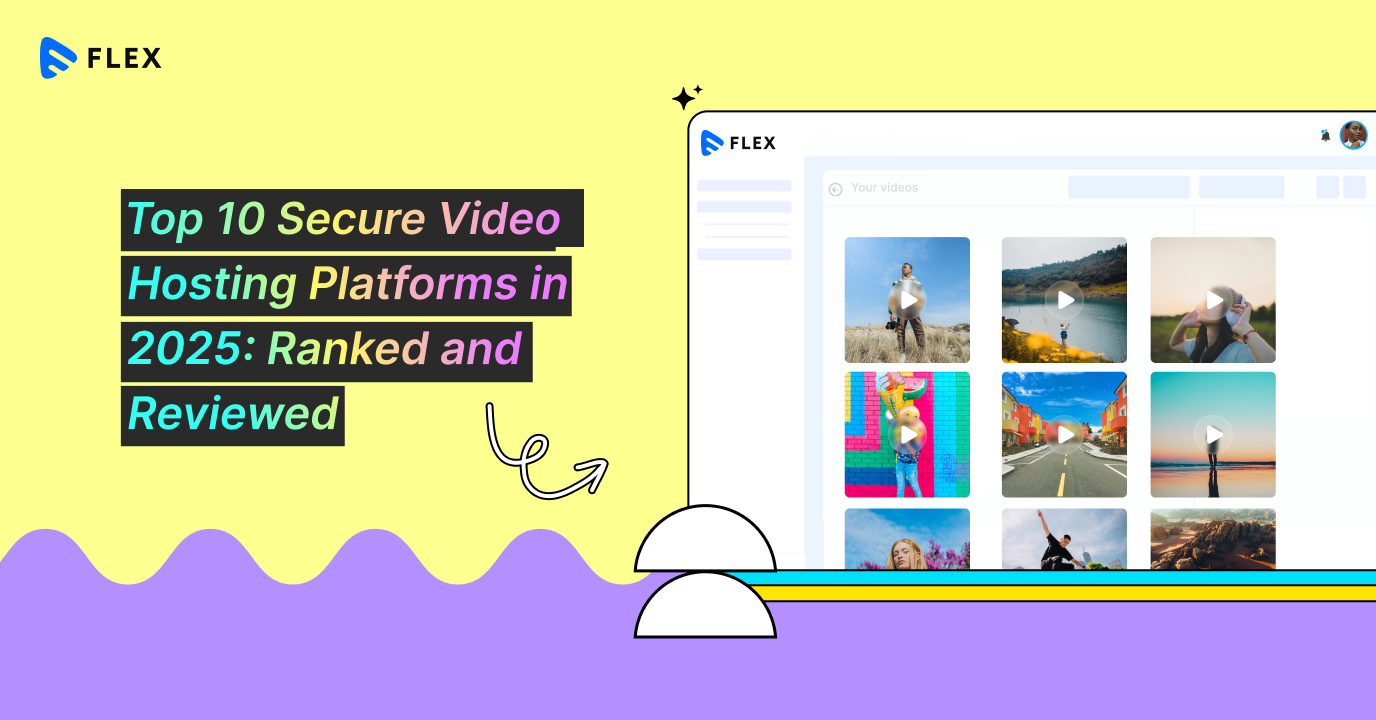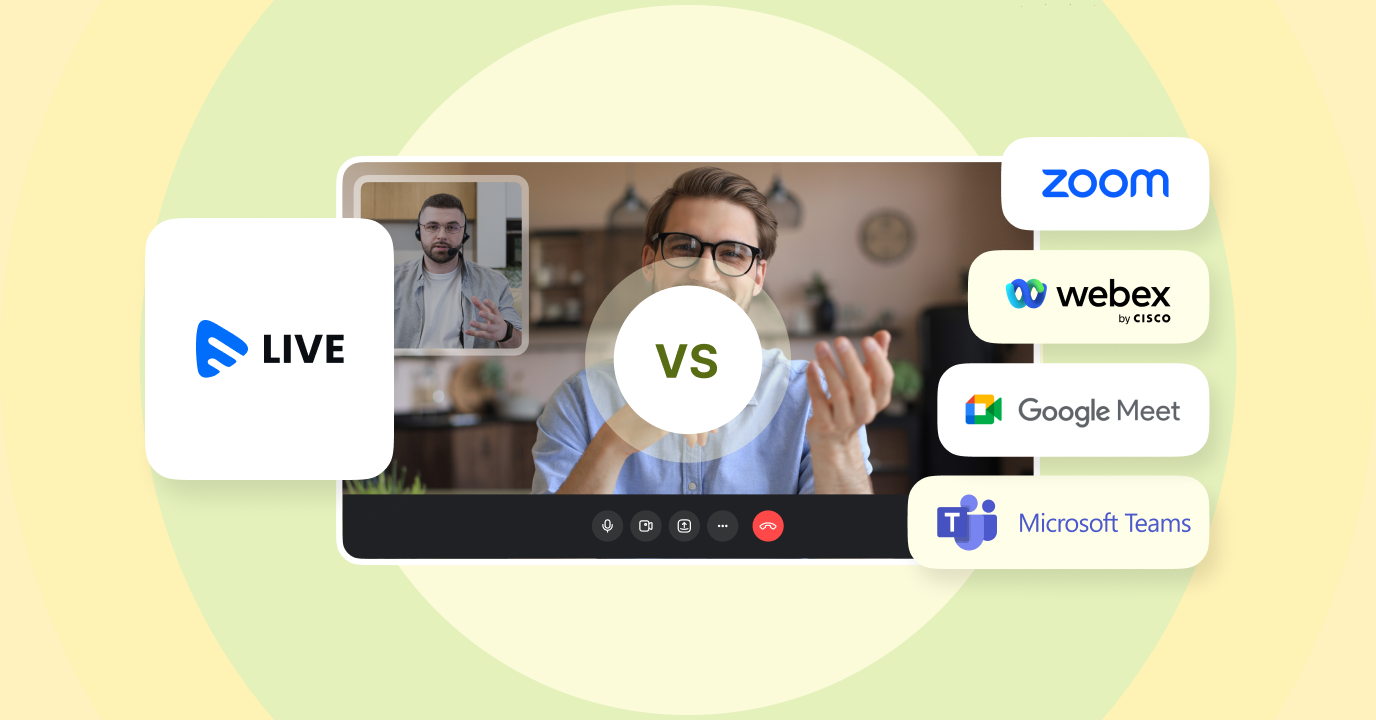Online video consumption is rapidly growing and becoming more popular these days. The global online video streaming market is expected to grow from $ 316 billion in 2024 to $ 443 billion by 2029, at a CAGR of 6.98%.
Mostly the GenZ and millennial audiences prefer streaming online videos on their preferred devices for the sake of entertainment as well as information. If you’re a content creator, media house, or an enterprise business looking for an online video platform to publish, share, and promote your video content, then this blog is for you.
Here, we will discuss what an online video platform is, the types of online video platforms, how an OVP works, and the best online video platforms to showcase your videos. We will also tell you how to build and launch your own branded online video platform, just like Netflix and Prime Video, instantly, without writing a single line of coding and technical knowledge.
What is an Online Video Platform?

Online video platform allows you to upload both live and recorded video content on a website and help in hosting, managing, and delivering videos to your audience without the need to build your own data centers or infrastructure.
A robust video hosting platform is essential for businesses and eLearning entities to effectively manage, secure, and distribute high-quality video content. These have built-in video players that allow adaptive streaming on virtually any device.
Top online video platforms like YouTube and Netflix include built-in video players, encoding and transcoding engines, monetization, analytics, reports, and many more features that are essential for a content creator.
Start your own online video platform today with Muvi – no coding required, complete control guaranteed! Sign up
How does an Online Video Platform Work?
The best online video platforms follow a five-step process to host and stream video content seamlessly and they are as follows:
Upload – Video content can be uploaded by registered customers through various options like Desktop, FTP, DropBox, and direct from URL. It supports all typical video formats.
Transcoding – Videos are encrypted with DRM encryption protocol and transcoded at multiple bitrates to ensure that viewers on any internet connection can stream videos.
Storage – The videos are securely stored on Amazon’s AWS servers using our own server-side video encryption technology. This means that they are protected from tampering by third parties, while also ensuring complete security.
DRM Protection – DRM Securely sets up your streaming subscription, rental, lease, and purchase options on your OTT platform. You can also set up license, playback, and rental duration for your video/audio content.
Decryption and Playback – Finally, the encrypted stream content is decrypted with a dynamic key that changes each time the stream is played. The DRM-based key transfer protocol differs from the public-key transfer protocol in that a private key is transferred between the website and our API. This signifies that hackers can’t decrypt the video streams, thus making video encryption hack-proof.
What are the Different Types of Online Video Platforms?
There are several types of online video platforms, each with its own unique features and use cases. Some of the most common types of video platforms include:
- Video Sharing Platforms: These platforms allow users to upload, share, and distribute video content to end users. Examples include Muvi TV, YouTube, Vimeo, and Dailymotion. They are ideal for reaching a broad audience and fostering community engagement. Users can interact with videos through comments, likes, and shares, making these platforms perfect for content creators looking to build a following.
- Video Hosting Platforms: These platforms provide a secure and reliable way to host video content. Examples include Muvi Flex, Wistia, Vidyard, and SproutVideo. They offer advanced features such as customizable video players, detailed analytics, and integration with marketing tools. Video hosting platforms are suitable for businesses that need to maintain control over their content, ensuring professional online video management and distribution.
- Video Marketing Platforms: Designed to help businesses create, distribute, and measure the effectiveness of their video marketing campaigns, examples include HubSpot, Marketo, and Pardot. These platforms offer tools for video creation, email marketing, lead generation, and performance tracking. They are ideal for marketers looking to leverage video trends for their content to drive conversions and grow their online audience.
- Enterprise Video Platforms: These platforms are designed for large organizations and provide advanced features such as security, analytics, and integration with other business systems. Examples include Muvi One, IBM Cloud Video, Kaltura, and Brightcove. Enterprise video platforms are suitable for internal communications, training, eLearning, and large-scale video marketing efforts.
- Live Streaming Platforms: These platforms allow users to broadcast live video content to a global audience. Examples include Muvi Live, Twitch, Facebook Live, and Periscope. Live streaming platforms are perfect for real-time engagement, whether it’s for gaming, events, webinars, or interactive sessions with viewers.
10 Best Online Video Platforms For Creators in 2026
Here’s a handpicked list of the best online video platforms, exclusively curated by our video streaming experts. All the platforms mentioned are creator-friendly and designed for ready-to-use video streaming workflow.
YouTube
YouTube is one of the most popular and best online video platforms in the world, with more than a billion users accessing the platform every month to watch and share videos. YouTube allows users to upload a wide variety of content, including music videos, movie trailers, educational videos, and more.
The free video hosting platform uses a built-in encoding system to convert videos to different formats and resolutions, making them compatible with a wide range of devices and network conditions.
Vimeo
Vimeo is a premium online video platform tailored for creators, offering tools for hosting, sharing, and monetizing videos. The free video hosting platform is completely ad-free and supports 4K video quality ensuring a surreal video experience.
Vimeo is ideal for showcasing portfolios, creating video-on-demand content, or running live events. The platform offers both free and paid plans, catering to the varying needs of individual content creators.
Twitch
Twitch is a leading online video platform for live streaming, highly loved by video creators in gaming, music, and lifestyle niches. It offers tools for real-time interaction with audiences through live chats and emojis, fostering community engagement.
While its primary focus is live content, creators can upload highlights for on-demand viewing. Twitch is ideal for those who thrive on audience interaction and want to build a loyal, engaged following.
Netflix
Netflix, with its millions of subscribers accessing the platform to watch exclusive and licensed content, is considered a top online video platform in the world. Netflix uses an advanced encoding system to compress and distribute video content to users in different formats and resolutions, making it compatible with a wide range of devices.
Netflix also provides features such as personalized recommendations, the ability to create profiles, and the option to download content for offline viewing for users.
Hulu
Hulu is one of the best online video platforms in the United States, with millions of subscribers accessing the vast library of TV shows, movies, original content, and live TV. Hulu is mostly known for its acclaimed originals and classic season episodic content.
Currently, the online video platform is available for streaming via subscriptions, ad-supported, ad-free, and also through bundles with ESPN+ and Disney+ for additional content.
Amazon Prime Video
Amazon Prime Video is a globally popular online video platform that offers a vast library of movies, TV shows, and Amazon Originals. The video streaming platform supports HDR, UHD, and 4K streaming and also has an offline viewing feature.
Viewers can either avail monthly subscription or rent desired titles to stream content on Amazon Prime Video. The online video platform can be accessible on multiple devices including Phones, tablets, laptops, and smart TVs.
PeerTube
Powered by Activity Pub and Web Torrent and available in 28 languages, PeerTube is considered one of the top online video platforms to stream on-demand videos in 2026.
The online video streaming platform offers a buffer-free quality streaming experience. Due to peer-to-peer technological development, the workload on each of the individual servers is highly reduced while streaming videos.
The online video-sharing platform also provides a simple-to-use PeerTube development setup to cater to custom video streaming requirements, ensuring a flawless video streaming experience for viewers.
Dailymotion
If you are looking for a reliable yet best online video platform to share your videos and build your audience base, then Dailymotion can be a hassle-free option for you.
Equipped with easy video searching and browsing solutions, Dailymotion is often the go-to option for Easy VOD sharing as well as live streaming with DVR support solutions.
The video streaming platform is compatible with high video frame rates up to 60 fps and also flaunts an adaptive HLS streaming solution for delivering seamless video quality, irrespective of network bandwidth at the user’s end.
The Internet Archive
Launched in 1996, The Internet Archive is an American digital video library containing more than 8 million videos. The video streaming platform is easy to access and delivers high-quality videos to viewers across the world.
The Internet Archive is completely free for video creators and hence you can upload as much video content as you want and share it with your fans/viewers.
Dtube
Dtube is a community-powered video-sharing platform that lets you share videos with your audience and offers a reward system in cryptocurrency. For video creators, Dtube offers great flexibility in terms of video uploading, sharing, and channel creation.
With advanced viewing features like watch later, watch again, Add to Watchlist, etc. Dtube ensures better user control and experience during online video streaming.
Build Your Own Online Video Platform With Muvi One – No Coding Required
When choosing among the best online video platforms, it’s important to consider your video streaming needs and business goals. It is a good idea to look at the platform’s cost, privacy, and security policies, and the level of control you have over your content and data.
If you are looking forward to creating your own Online Video Platform, consider choosing Muvi One as your online video platform provider. Muvi One is an all-inclusive video streaming platform that allows you to launch White Label Multi-Device OTT streaming & Video Streaming Platforms, offering Video on Demand (VOD) and live Streaming, with multiple monetization options.
Take a 14-day free trial of Muvi One and launch your own video platform like YouTube instantly!














Add your comment